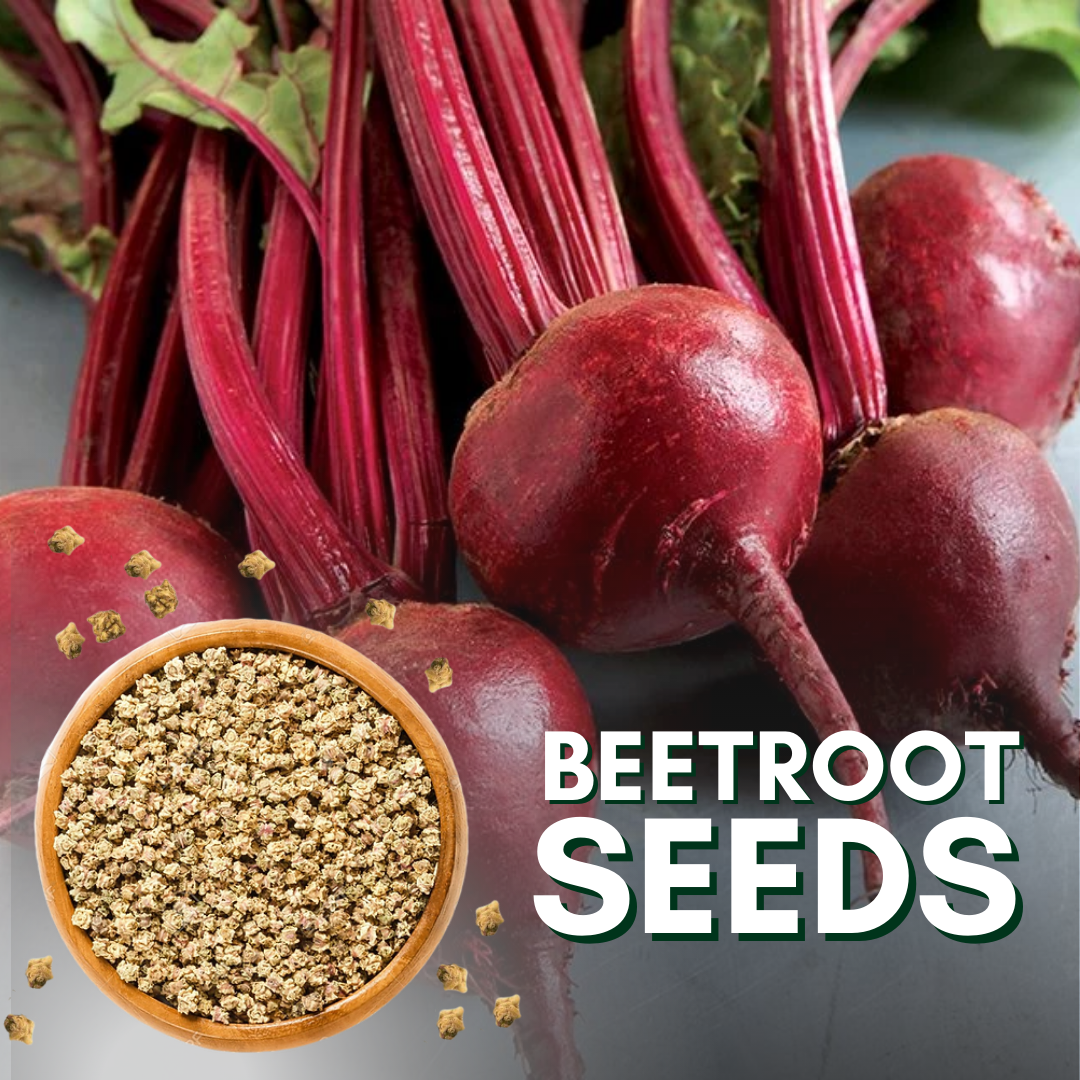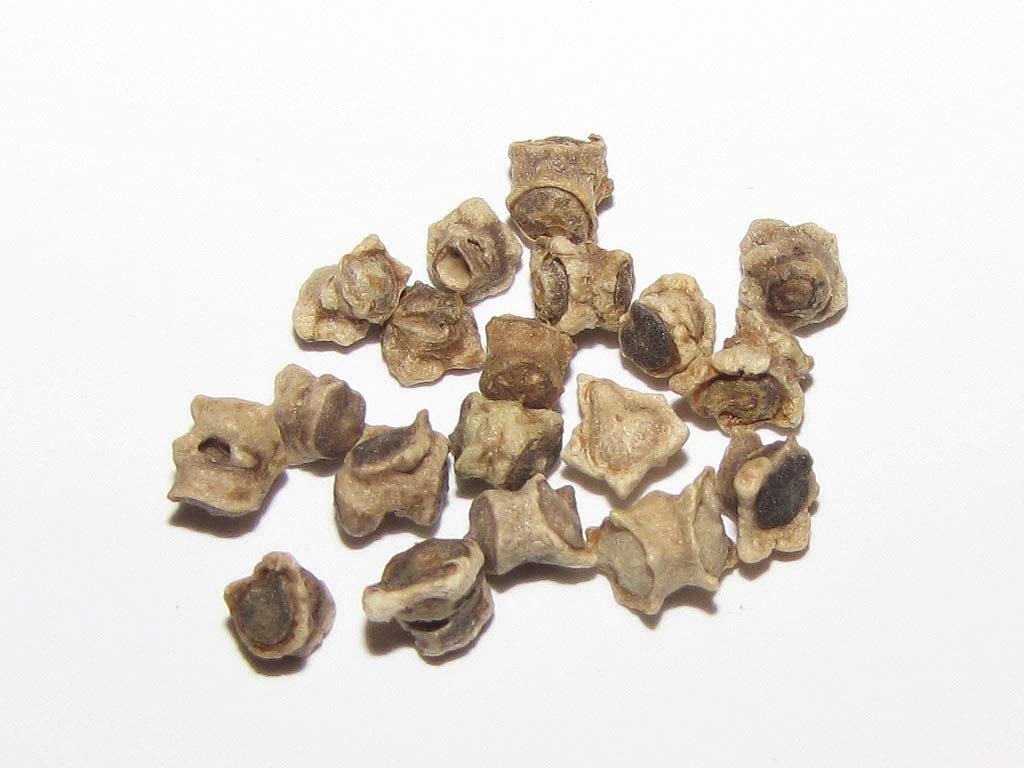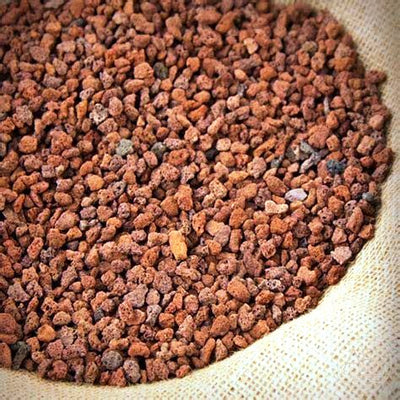


Green Paradise Offers Healthy Beetroot
Seeds
About Beetroot Plant
The beetroot plant, scientifically known as Beta vulgaris, is a root vegetable that belongs to the Chenopodiaceae family. It is commonly grown for its edible taproot, which is used in various culinary preparations. The plant is native to Europe and is now cultivated worldwide for both commercial and home garden purposes.
Here are some key features and facts about beetroot plants:
- Beetroot plants have a distinctive appearance with large, dark green, and slightly wrinkled leaves.
- The leaves grow directly from the root and are generally 8-10 inches long.
- The taproot, which is the edible part, is usually bulbous, round, or elongated in shape, depending on the variety.
Varieties:
- There are several beetroot varieties available, including the common red beetroot, which has a deep red flesh and skin.
- Other varieties include golden or yellow beets, which have a vibrant yellow color, as well as white beets and striped beets.
- Different varieties offer slightly different flavors and textures.
Cultivation:
- Beetroot plants prefer cool climates and grow best in loose, well-drained soil.
- They can tolerate a range of soil types but thrive in soil rich in organic matter.
- The plants require full sun for optimal growth, although they can tolerate partial shade.
- They are typically sown directly into the ground, as they don't transplant well due to their delicate root system.
Growing Conditions:
- Beetroot plants prefer temperatures between 60°F and 65°F (15°C to 18°C) but can tolerate a wide range of temperatures.
- Adequate moisture is essential for good root development, so regular watering is important, especially during dry periods.
- The plants usually take 55 to 70 days to reach maturity, depending on the variety.
Harvesting:
- Beetroot roots are usually ready for harvest when they reach 1 to 3 inches in diameter, although they can be harvested at any size.
- Larger roots tend to have a more woody texture.
- To harvest, gently loosen the soil around the root, being careful not to damage it.
- Twist or cut off the leaves, leaving about an inch of the stem intact.
Nutritional Value:
- Beetroot is known for its nutritional benefits.
- It is low in calories and fat but rich in essential nutrients such as fiber, vitamins A and C, folate, and minerals like potassium and manganese.
- It also contains natural pigments called betalains, which have antioxidant properties.
Culinary Uses:
- Beetroot is a versatile vegetable that may be eaten in a variety of ways.
- It can be eaten raw in salads, juiced, pickled, roasted, boiled, or steamed.
- The leaves of the beetroot plant, often referred to as beet greens, are also edible and can be cooked and enjoyed similarly to spinach or Swiss chard.
Health Benefits:
- The consumption of beetroot has been associated with several health benefits.
- It may help lower blood pressure, improve exercise performance, support digestive health, and promote healthy skin due to its high nutrient content and antioxidant properties.
Overall, beetroot plants are a popular and nutritious addition to any garden or diet. Their vibrant color, unique flavor, and versatility in the kitchen make them a favorite among many home cooks and chefs.
How To Grow Beetroot Plant From Seeds
Growing beetroot plants from seeds is a relatively straightforward process.
Here's a step-by-step approach to successfully growing beetroot:
Seed Selection:
- Purchase good quality beetroot seeds from a reputable supplier or garden center.
- Look for fresh seeds with a high germination rate.
Timing:
- Beetroot is a cool-season crop, so it's best to sow the seeds when the soil temperature is between 50°F (10°C) and 85°F (30°C).
- Depending on your climate, you can sow seeds in early spring for a summer harvest or in late summer for a fall harvest.
Soil Preparation:
- Beetroot prefers well-drained, loose soil with a pH of 6.0 to 7.5.
- Prepare the soil by removing any weeds or rocks and incorporating organic matter like compost to improve fertility and drainage.
Sowing Seeds:
- Create furrows in the prepared soil about 1 inch (2.5 cm) deep and space them 12 to 18 inches (30 to 45 cm) apart.
- Sow the seeds thinly along the furrow, spacing them about 1 inch (2.5 cm) apart.
- Cover the seeds with soil and gently firm it down.
Watering:
- Keep the soil consistently moist during germination and early growth.
- Water the planted seeds gently using a watering can or a gentle spray from a hose. Avoid overwatering, as it may cause the seeds to rot.
Thinning:
- Once the seedlings have emerged and have developed their first true leaves, thin them out.
- Remove weaker or overcrowded seedlings, leaving a gap of around 3 to 4 inches (7.5 to 10 cm) between plants.
- Thinning helps provide sufficient space for the beetroots to grow.
Fertilization:
- Beetroots are moderate feeders, so it's beneficial to fertilize the soil before planting the seeds.
- You can use a balanced toxin with equal quantities of nitrogen, phosphorus, and potassium.
- Follow the manufacturer's instructions for operation rates and timings.
Mulching:
- Apply a layer of organic mulch, such as straw or wood chips, around the plants once they are a few inches tall.
- Mulching helps conserve moisture, suppress weed growth, and keep the soil temperature cool.
Care and Maintenance:
- Keep an eye on your beetroot plants and water them regularly, ensuring the soil remains evenly moist.
- Remove any weeds that may contend for nutrients and water.
- Additionally, monitor for common pests like aphids or leaf miners, and take appropriate measures to control them if necessary.
Harvesting:
- Beetroot is typically ready for harvest 8 to 12 weeks after sowing, depending on the variety.
- Harvest when the roots are about 1 to 3 inches (2.5 to 7.5 cm) in diameter, or according to your preference.
- Gently loosen the soil around the root and pull it out.
- Trim the leaves, leaving about an inch (2.5 cm) of the tops intact to prevent bleeding of the color.
By following these steps, you should be able to grow your own delicious beetroot plants from seeds. Enjoy your homegrown beetroots!
sprouted nicely


















